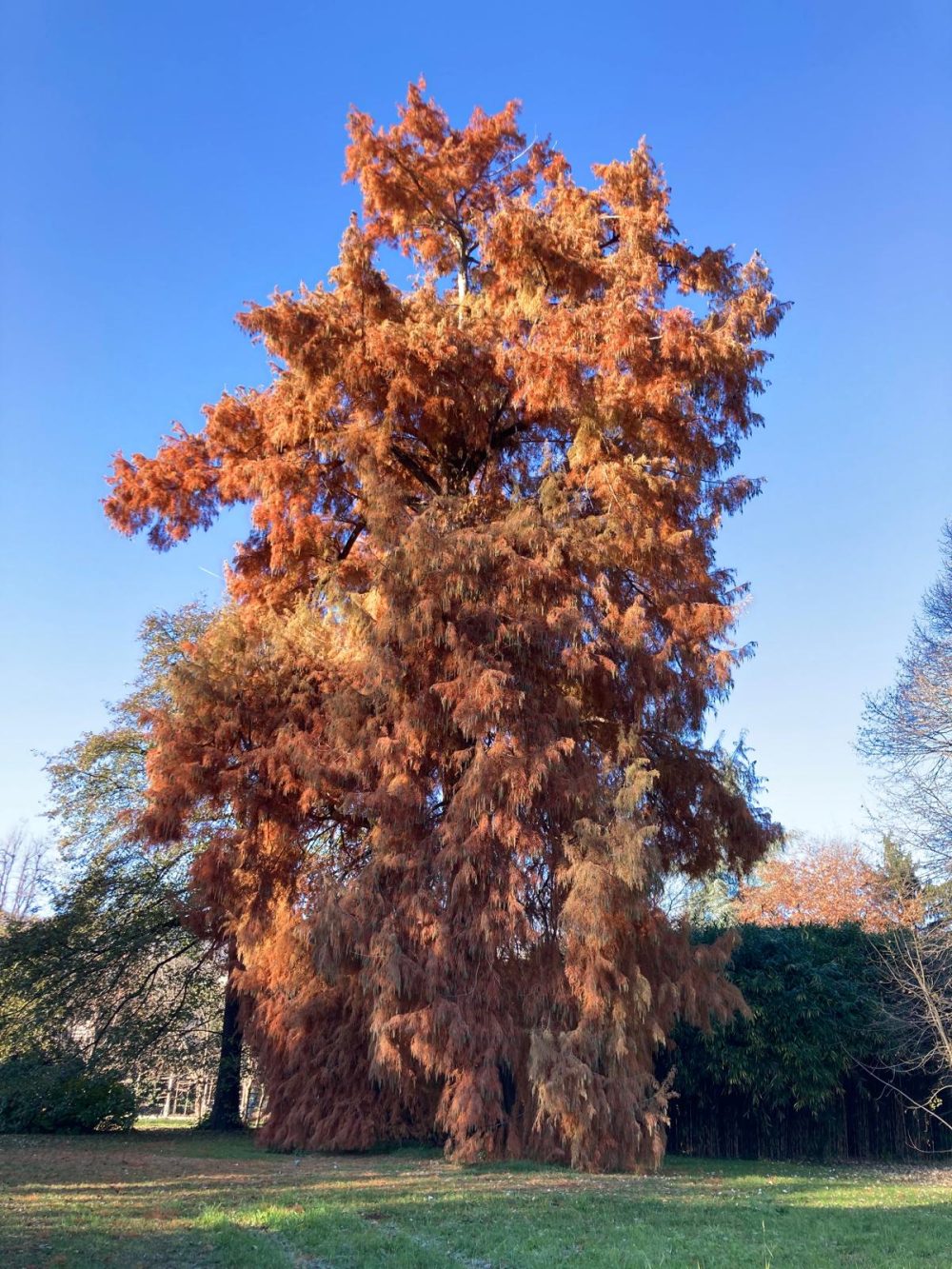The Monumental Bald Cypress

Audio

Descrizione
For years, I dreamed of restoring the rustic soul of the Castle.
I imagined grace and sensitivity, interpreting the signs left by time and telling the story of this place and, with it, an ancient vocation and wisdom. Every space hides a story and one must know how to listen to it. For the garden, I sought the help of Paolo Pejrone, who knows how to recognize and interpret the character of places like this. The vegetable garden has a circular shape which is harmonious, enclosed, and protected. It overlooks the rustic courtyard of the old residence, completing its original agricultural vocation with the stable, barn, oven, chicken coop, and washhouse. The layout revolves around the central axis that runs through the entrance portal of the old farmhouse, the yard, and the main building, extending to the round tower. Seen from above, the vegetable garden seamlessly integrates into the site’s design The materials, almost entirely found at the Castle and scattered throughout the Park, served as a guide for the construction choices. The design was retraced using local and old stones. Along the perimeter, chestnut wood poles were set on stone bases, as was traditionally done in the old rural areas of Pinerolo. The garden is framed by rows of white strawberry grapes and Luglienga, the Sant’Anna grape that ripens early in July, interspersed with wild strawberries, carnations, lilies of the valley, peonies, hellebores, and other delicate plants. Inside, horticultural and floral plants include rare and ancient species, cultivated in cyclic, alternating rotations. Their cultivation lines are linear and concentric, with vegetables planted in a particular, aesthetic order. Dahlias beautifully complement the abundant production of cut flowers from the garden. The pathways are made of calatà, also known as “Piedmontese cobblestone,” in harmony with the old paving of the courtyard. In the centre there is a square stone basin, which was reconstructed using old slabs found at the Castle, and which holds perpetually moving water. The water, which disturbs the static immobility of this quiet, prearranged tableau, flows uninterruptedly, fed by the ancient well.
The vegetable garden is a place of wisdom and knowledge, an open book of passion and affection. In gardens, there is both plunder and consolation. Everything grows and is taken away, everything starts again, always the same yet different.
Nelle vicinanze trovi
Ti trovi qui
